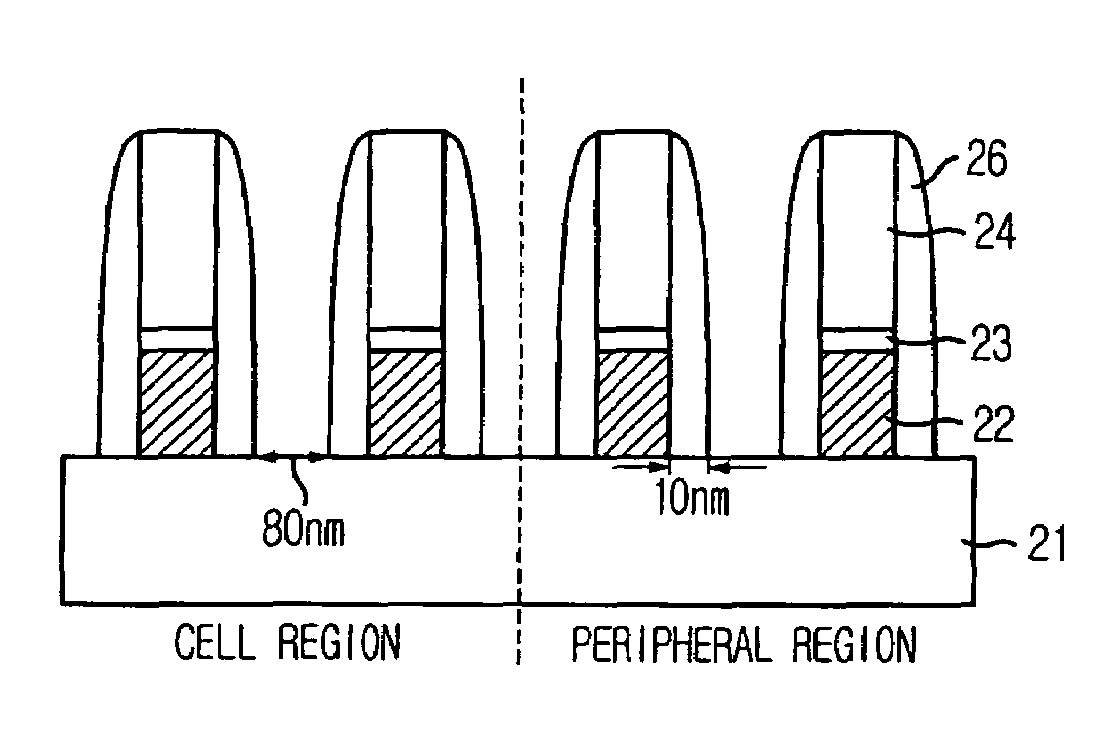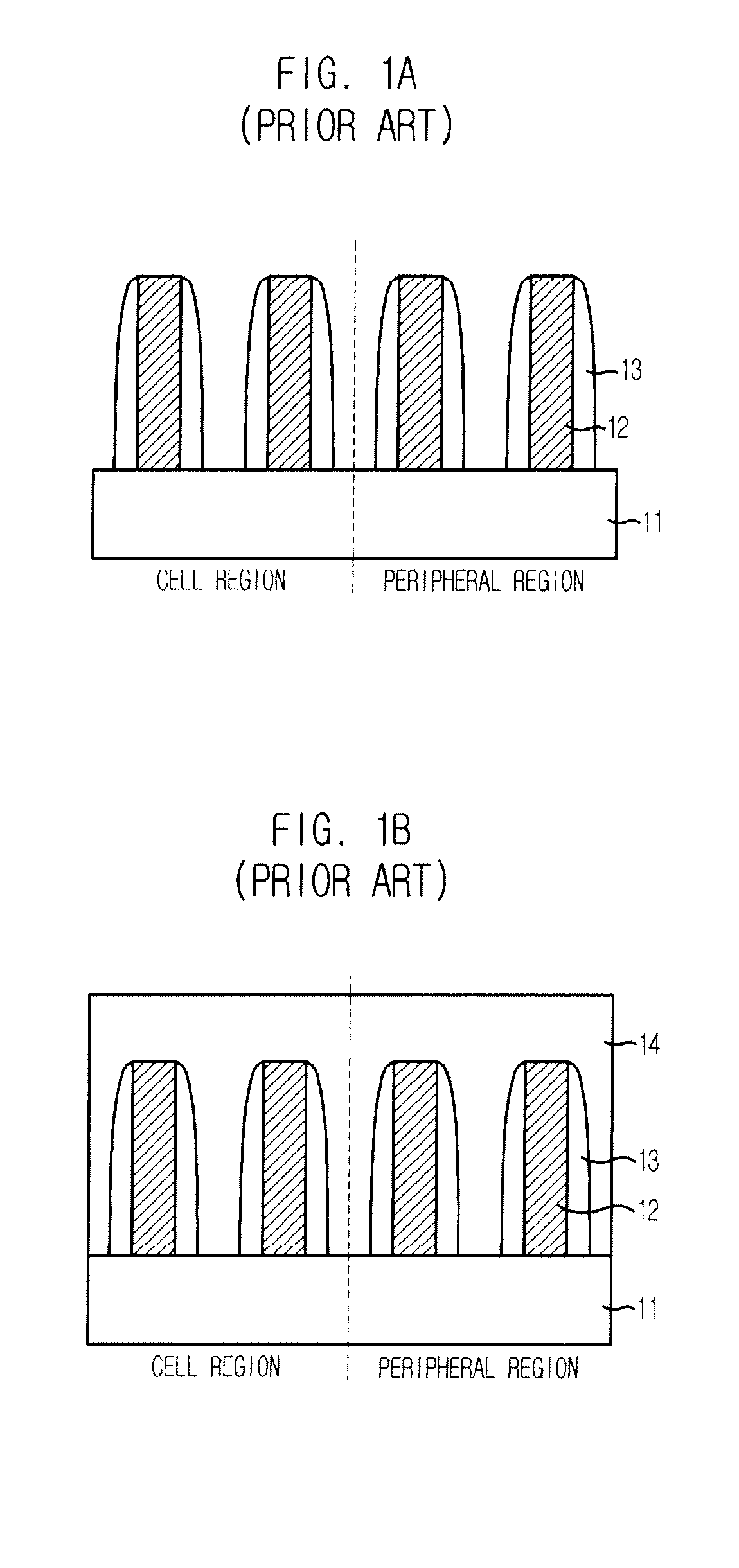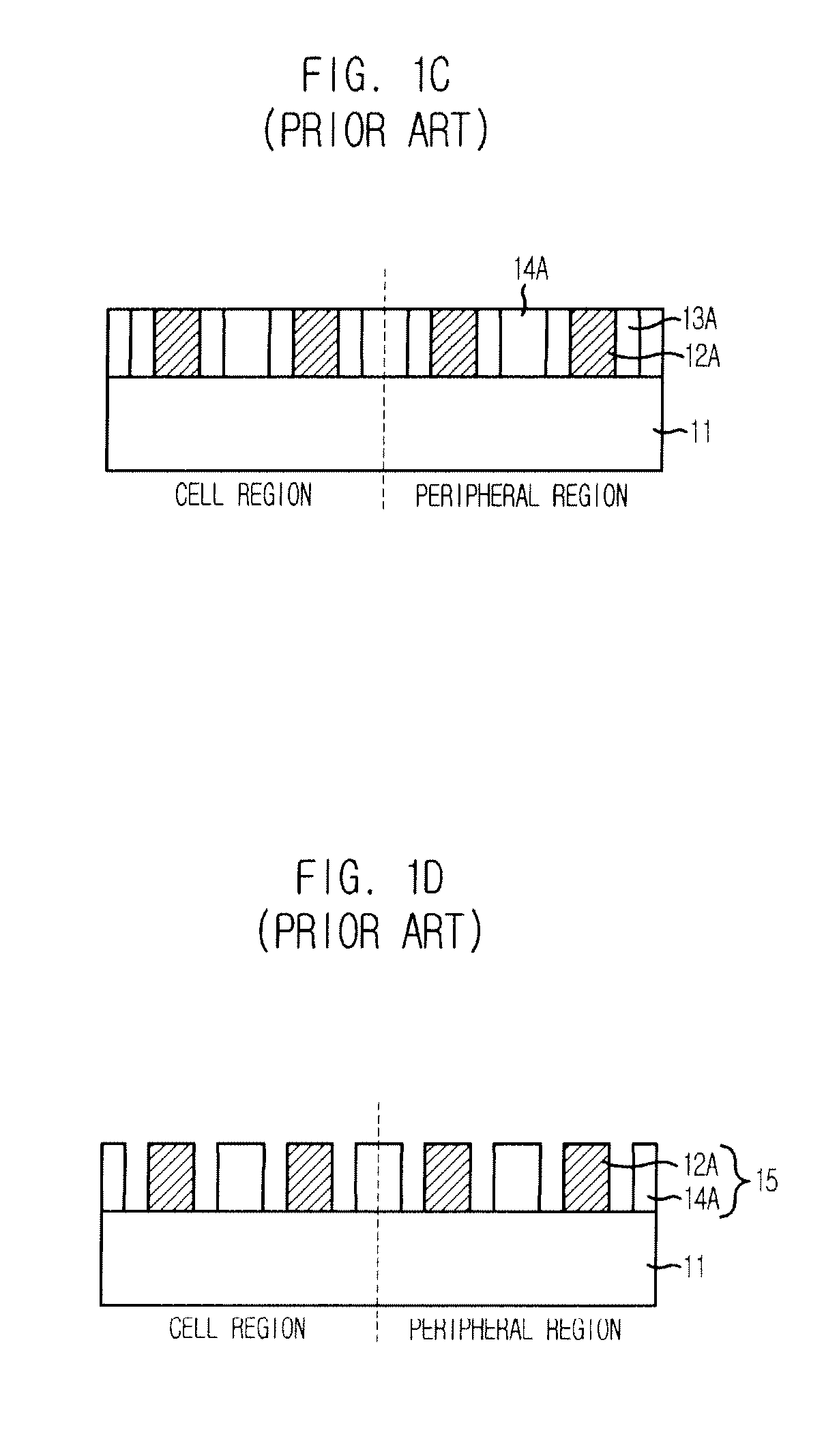Method for fabricating semiconductor device
a technology of semiconductor devices and exposure equipment, applied in the direction of semiconductor devices, basic electric elements, electrical appliances, etc., can solve the problems of existing technology not being able to achieve, the line width of the exposure equipment used to fabricate the semiconductor device cannot be less than 60 nm, and the profile of the photoresist pattern is also poor, so as to achieve the effect of minimizing non-uniformity
- Summary
- Abstract
- Description
- Claims
- Application Information
AI Technical Summary
Benefits of technology
Problems solved by technology
Method used
Image
Examples
Embodiment Construction
[0017]FIGS. 3A to 3F illustrate cross-sectional views showing a method for fabricating a semiconductor device in accordance with an embodiment of the present invention.
[0018]Referring to FIG. 3A, a semiconductor substrate (not shown) defining a cell region and a peripheral region is prepared. An etch target layer 21 is formed over the semiconductor substrate. A plurality of etch mask patterns including a first hard mask layer 22, a first pad layer 23, and a second pad layer 24 are formed over the etch target layer 21. The first hard mask layer 22, the first pad layer 23, and the second pad layer 24 include polysilicon, a nitride-based material, and an oxide-based material, respectively. Thus, the first hard mask layer 22, the first pad layer 23, and the second pad layer 24 are referred to as the polysilicon layer 22, the nitride layer 23, and the first oxide layer 24 hereinafter. The polysilicon layer 22 is formed of doped polysilicon with phosphorus concentration of approximately 5...
PUM
 Login to View More
Login to View More Abstract
Description
Claims
Application Information
 Login to View More
Login to View More - R&D
- Intellectual Property
- Life Sciences
- Materials
- Tech Scout
- Unparalleled Data Quality
- Higher Quality Content
- 60% Fewer Hallucinations
Browse by: Latest US Patents, China's latest patents, Technical Efficacy Thesaurus, Application Domain, Technology Topic, Popular Technical Reports.
© 2025 PatSnap. All rights reserved.Legal|Privacy policy|Modern Slavery Act Transparency Statement|Sitemap|About US| Contact US: help@patsnap.com



